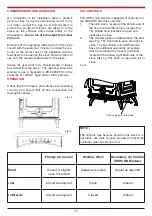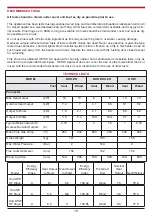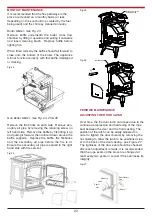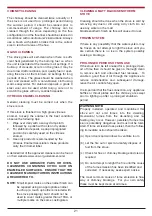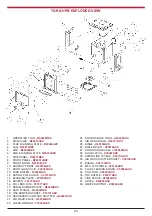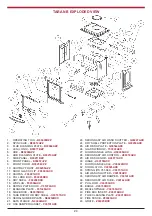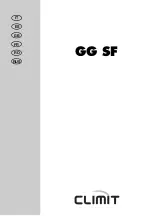
Flue Liner
Sleeve
Flue Pipe
Possible
Positions
for access
Flue
Soot Door
Appliance Flue
Outlet
Appliance
Debris Collection
space
TOP FLUE EXIT
For top outlet configuration remove the hob from the
top of the stove, turn the hob upside down and place
it on the floor, taking care not to damage it. Remove
the hob blanking plate by unscrewing the two
screws from underneath the hob.
Next remove the flue blanking plate from the top of
the stove by unscrewing the two screws, connect
this blanking plate to the rear flue outlet at the back
of the stove. Replace the hob in the correct position.
Connect the connector pipe (not supplied) into the
top flue outlet socket at the top of the stove and
cement into place using approved fire cement ensur-
ing that no cement blocks the flue passageway. (See
Fig. 4)
Fig.3
9
Fig 4
REAR FLUE EXIT
For rear flue outlet configuration push in flue con-
nector pipe (not supplied) into flue outlet socket at
the rear of the stove and cement into place using
approved fire cement ensuring that no cement
blocks the flue passageway. (See Fig. 5)
Fig. 5
DOWN DRAUGHTS
However well designed constructed and positioned,
the satisfactory performance of the flue can be
adversely affected by down draught caused by near-
by hills, adjacent tall buildings or trees. These can
deflect wind to blow directly down the flue or create
a zone of low pressure over the terminal.
A suitable terminal or cowl will usually effectively
combat direct down blow but no cowl is likely to pre-
vent down draught due to a low pressure zone.
(See Fig.6)
Summary of Contents for Tara
Page 27: ...27 NOTES ...

















